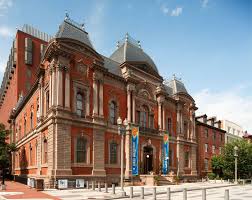
Murder Is Her Hobby: Frances Glessner Lee and The Nutshell Studies of Unexplained Death
Oct 20 2017 - Jan 28 2018
Washington, DC
Murder is Her Hobby: Frances Glessner Lee and The Nutshell Studies of Unexplained Death explores the unexpected intersection between craft and forensic science. Frances Glessner Lee (1878-1962) crafted her extraordinary “Nutshell Studies of Unexplained Death” – exquisitely detailed miniature crime scenes – to train homicide investigators to “convict the guilty, clear the innocent, and find the truth in a nutshell.” These dollhouse-sized diorama composites of true crime scenes, still used in forensic training today, helped to revolutionize the emerging field of forensic science. At the same time, they subverted traditional uses for gendered and domestic crafts such as miniature-making and needlework, offering Glessner Lee a rare and honored position in the male-dominated world of police investigation.
Glessner Lee, the first female police captain in the U.S., is considered the “godmother of forensic science.” She was a talented artist as well as criminologist, and constructed the Nutshells beginning in the early 1940s to teach investigators at Harvard University’s department of legal medicine how to properly canvass a crime scene to effectively uncover and understand evidence. The equivalent to “virtual reality” in their time, her masterfully crafted dioramas feature handmade elements to render scenes with exacting accuracy and meticulous detail. Every element of the dioramas—from real tobacco in tiny, hand-rolled burned cigarette butts, fabrics and wallpaper carefully worn to look faded and old, tiny stockings knit with straight pins, working locks, and curled pages on calendars, to the angle of minuscule bullet holes, the patterns of blood splatters, and the bloating and discoloration of miniature corpses—challenges trainees’ powers of observation and deduction.
While the nutshells draw from real cases, Glessner Lee imagined and designed each setting to resemble but not replicate the original scenes, embellishing them with elements from her imagination and the world she inhabited. In their astounding accuracy they provide a window into the domestic history and material culture of mid-twentieth century America, particularly the lives of women and the working classes, whose cases Glessner Lee championed. They also tell a story of how a woman co-opted traditionally feminine crafts to advance a male-dominated field and establish herself as one of its leading voices.
Murder is Her Hobby: Frances Glessner Lee and The Nutshell Studies of Unexplained Death is the first public display of the complete series of nineteen studies still known to exist, reuniting eighteen pieces on loan from the Maryland Medical Examiner’s Office with the “lost nutshell” on loan to the museum from the Bethlehem Heritage Foundation for the first time since 1966. The exhibition is curated by Nora Atkinson, the museum’s Lloyd Herman Curator of Craft.
Credit: Exhibition overview from museum website
Whether you go or not, The Nutshell Studies of Unexplained Death offers readers an extraordinary glimpse into the mind of this master criminal investigator. Corinne May Botz's lush color photographs lure viewers into every crevice of Frances Lee's models and breathe life into these deadly miniatures, which present the dark side of domestic life, unveiling tales of prostitution, alcoholism, and adultery. The accompanying line drawings, specially prepared for this volume, highlight the noteworthy forensic evidence in each case. Botz's introductory essay, which draws on archival research and interviews with Lee's family and police colleagues, presents a captivating portrait of Lee.
Lee, a wealthy grandmother, founded the Department of Legal Medicine at Harvard in 1936 and was later appointed captain in the New Hampshire police. In the 1940s and 1950s she built dollhouse crime scenes based on real cases in order to train detectives to assess visual evidence. Still used in forensic training today, these eighteen Nutshell dioramas, on a scale of 1:12, display an astounding level of detail: pencils write, window shades move, whistles blow, and clues to the crimes are revealed to those who study the scenes carefully.
Exhibition Venues & Dates
Oct 20 2017 - Jan 28 2018
Washington, DC
